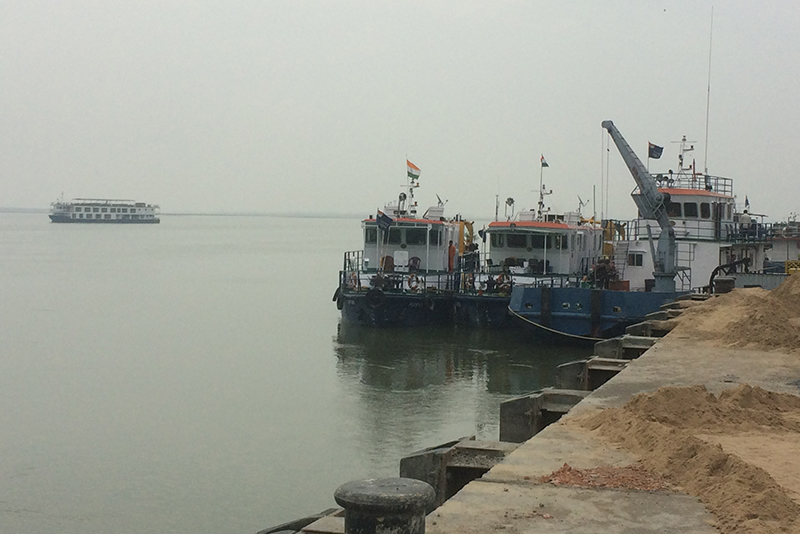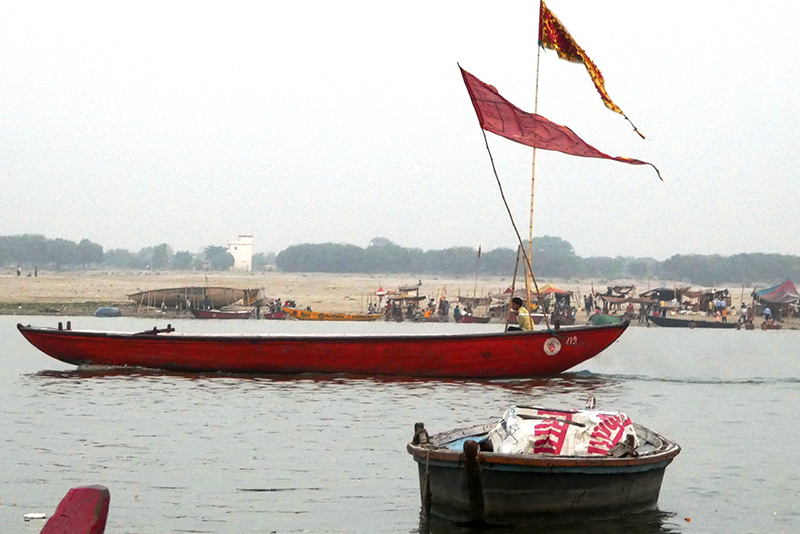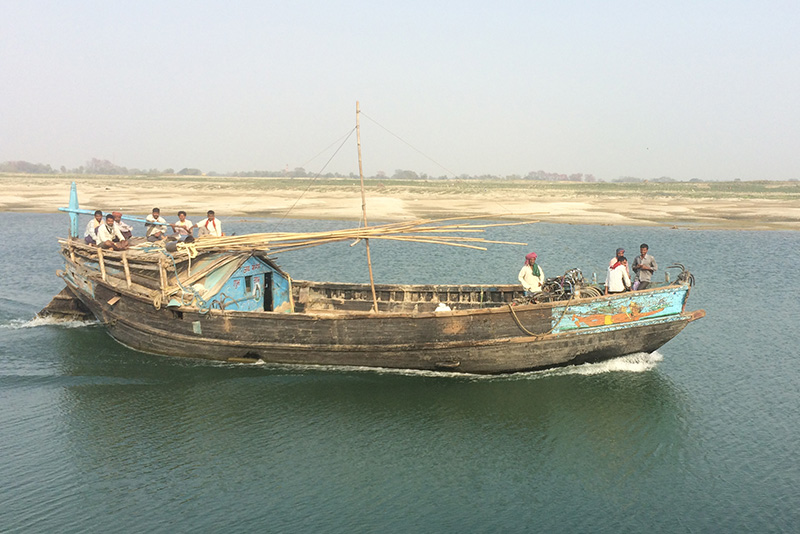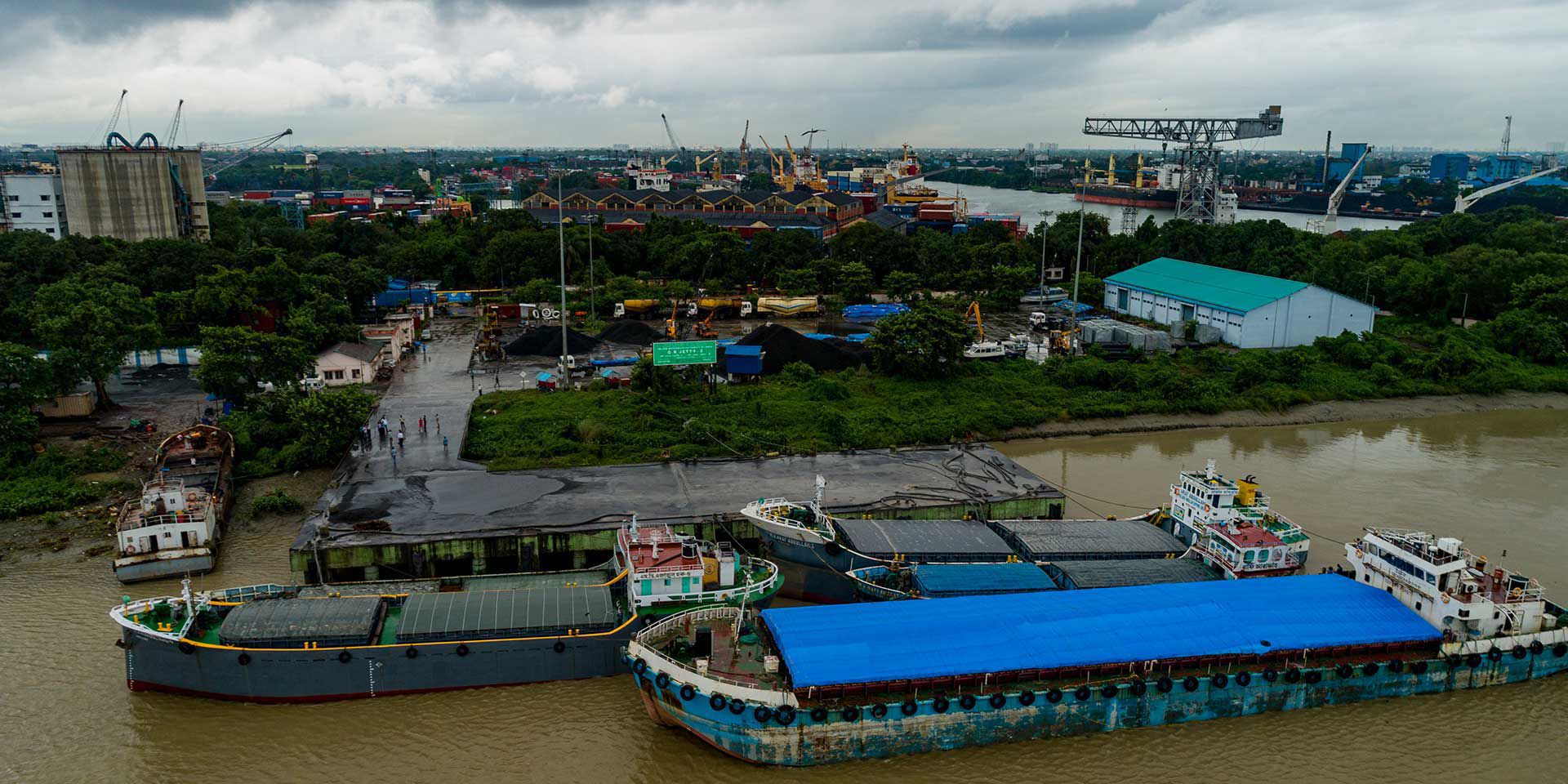Despite technological advances of air, rail, and road transport to move bulk goods and large numbers of people, inland waterways continue to play an important role in improving domestic connectivity and lowering logistics costs. The World Bank estimates that in India, for example, it costs 1 cent per kilometer to carry a ton of freight by waterway, compared to 2 cents by rail and 3 cents by road. Often, the cost of shipping by an inland waterway in India can be even less—as little as one-seventh of the ground shipping cost.
Affordability is not the only advantage of inland waterway transport. Although ground transport wins at speed, waterways move up to four times as much cargo per one liter of fuel, making trade cost-effective. In addition, less energy consumption, low noise, and reduced carbon footprint turn waterway transport into a greener and more reliable way of moving freight.
But in countries that lack enabling frameworks and face fiscal constraints, waterway infrastructure can be slow to develop or modernize. In India, decades of underinvestment in waterways across the country made most shipping channels, canals, and logistics infrastructure unusable. As a result, waterway transport makes up only 0.5 percent of the total freight traffic. Congested road and railway networks slowed the movement of cargo, driving up the logistics costs that now account for 18 percent of the country’s GDP.
One of India’s major waterways is the 1,620-km Ganga watercourse, known as the National Waterway 1 (NW1). To revive it to 1,500-ton vessel cargo from the eastern seaport of Haldia to Allahabad, and to shift cargo from costly road and rail to the river, the government of India launched the Jal Marg Vikas (JMV) program in 2014. The Inland Waterways Authority of India (IWAI), the lead agency for the JMV program, asked IFC to help pilot a public-private partnership (PPP) model for the development of Kolkata and Patna terminal facilities along the Haldia-Allahabad Corridor.
Results of the PPP will revive water arteries to help create a new market for inland waterway logistics, improve regional integration, promote economic growth in the region, and enhance logistics competitiveness—unlocking opportunities for private investment in the new sector. This PPP program is being implemented in partnership with DevCo, a multi-donor facility affiliated with the Private Infrastructure Development Group (PIDG), the United Kingdom, and Denmark.

In India, decades of underinvestment made most shipping channels, canals, and logistics infrastructure unusable.
Upstreaming Change
The NW1 passes through one of India’s most densely populated areas that produces 40 percent of the country’s traded goods, connecting four neighboring Gangetic states with other parts of India and major waterways in Bangladesh and Nepal. Because NW1 could carry only 5 million tons of freight out of 370 million generated in the region annually, most cargo from the region detoured around the much-closer port of Kolkata to reach the sea ports in western India.
The lack of infrastructure was not the only challenge in the development of India’s waterway transport sector. Legal bottlenecks and weak trade agreements constrained cross-border flow of cargo between India, Bangladesh, and Nepal, with broader policy gaps on waterway transport restricting commercial operation.

IFC's support included clarifying customs regulations and building the government's capacity to tender future projects.
Transforming the sector wouldn’t be possible without first improving the legal and pricing frameworks for government partnerships with the private sector. Working closely with the World Bank, IFC helped improve the Indo-Bangladesh Protocol and Indo-Nepal Trade Agreement, clarify customs regulations, and resolve security issues and institutional constraints. To help IWAI bring in and scale up private sector involvement in the management and development of river terminals into logistics hubs, IFC helped build its capacity to manage contracts and tender future projects in line with international standards.
For the NW1 project, Bangladesh’s Summit Alliance Limited (SAPL) won the contract to operate and develop the two river terminals under a revenue-sharing agreement yielding almost 40 percent to IWAI. This South-South investment will also encourage economic integration between India and Bangladesh, and create a market for terminal operators, shippers, and cargo owners around the Ganga River.
Once fully operational, the NW1 has the potential to emerge as the leading logistics artery for northern and western India, helping Gangetic states direct more of their freight to Kolkata and Haldia ports, reducing logistics costs significantly, improving freight movement reliability, and fostering cross-border trade.

Six months after its implementation, the PPP helped eliminate 24,000 truck journeys.
Setting Up Waterway Logistics Infrastructure
After SAPL took over the Kolkata facility in late 2018, the cargo turnover reached 563,000 tons in the first nine months of operations, compared to 20,000 tons per year in 2015. The PPP helped eliminate 24,000 truck journeys and reduce heavy vehicle traffic by almost 10 million truck kilometers in the first six months. This modal shift of cargo from road to water helped decongest India’s roads and avoid 26,000 tons of greenhouse gas emissions per year. By 2023, SAPL will invest $16.5 million to refurbish and rebuild the facility, likely exceeding the target $25 million over the course of the 30-year contract.
Since the lack of solid legal framework, industry capacity, and investment risk guarantees has been one of the reasons for the slow development of India’s waterway infrastructure, the project has become a model for replication in setting up future terminals across the country. Moving forward, NW1 will form a larger multimodal transport network being planned along the river.
Join the conversation: #IFCimpact
Published in January 2020
